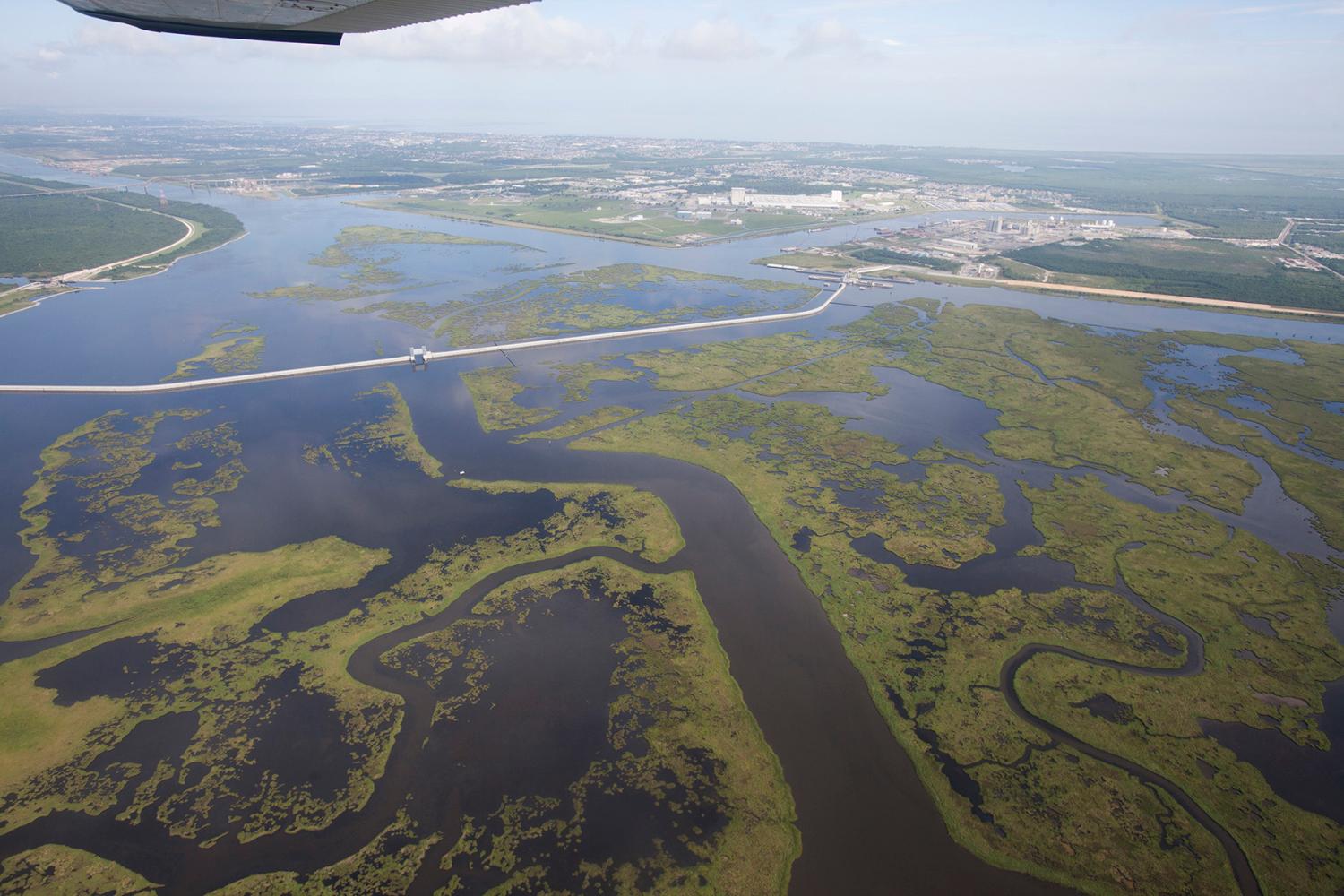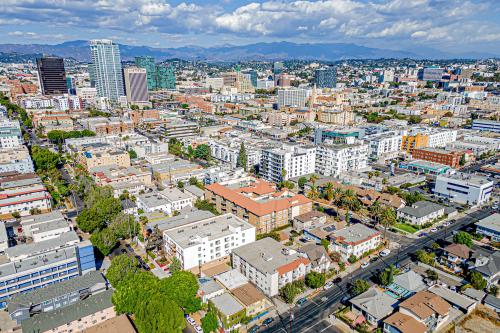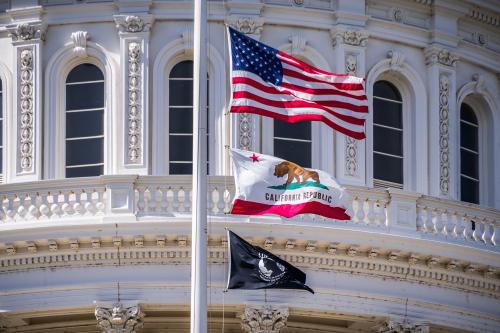In their influential work on environmental justice in the wake of Hurricane Katrina and the failure of the federal levees in August 2005, environmental justice doyens Robert Bullard and Beverly Wright documented how many low-income neighborhoods and historic Black neighborhoods across the New Orleans metropolitan area experienced a “second disaster” in the days, weeks, and months after the hurricane.1 The hurricane revealed, with staggering clarity, how environmental injustices that existed across the New Orleans metropolitan area prior to the hurricane amplified the impact of the storm.2
This second disaster generated cascading risks as the violent storm and flooding destroyed industrial sites, spilled oil and other toxic waste into floodwaters, subjected many communities to dangerous pollutants during cleanups, and led to lengthy delays and bureaucratic bungles in disaster relief that, in some cases, dragged on for years. Yet despite these environmental impacts, addressing pollution across the city was not a focus for policymakers after Hurricane Katrina.
Indeed, the U.S. Government Accountability Office, the non-partisan investigative arm of the U.S. Congress, found that in the immediate aftermath of the storm, federal and state agencies obscured pollution levels across the city and denied relief claims in neighborhoods that had higher rates of soil toxicity prior to the storm.3 Unfortunately, over the past 20 years, little has changed in terms of federal policy, with few meaningful bipartisan actions that have tightened environmental regulations.4,5 State and local agencies were no better. In Louisiana, polluters frequently violate national emissions standards, and yet new legislation has been recently introduced that is preventing communities from challenging big polluters.6
The results of this policy inaction are borne out in the data. The analysis in this report, summarizing data from the U.S. Environmental Protection Agency’s (EPA) Toxic Release Inventory,7 active superfund registry,8 and compliance and enforcement database,9 show that, if anything, pollutants have become more pervasively distributed across metropolitan New Orleans over the past 20 years. What’s more, under-resourced communities have historically been targeted for new developments, and the data in this report show that this practice has not changed since 2005.
The upshot: The high density of polluting industries and toxic sites in the New Orleans metropolitan area remains an environmental disaster in waiting—just as it was prior to Hurricane Katrina. Even more worrisome is the threat of severe weather and a disaster greater than the one 20 years ago. According to The New Orleans Index at Twenty, since 2020-2024, every parish in metro New Orleans has experienced at least 17 FEMA disaster declarations—four times greater than the national average.10
Investments in infrastructure such as the levees in and around New Orleans mean that many residents are less exposed to floods than in the past. But the spatial overlap between pollution and a suite of other social and economic challenges that amplify climate risks—including poverty, unemployment, and poor health—mean that some neighborhoods are substantially more vulnerable than others.
New Orleans, like other cities across the United States that are exposed to extreme weather, needs new policies that recognize the complex linkages between pollution, health, and resilience.
This report first examines how environmental injustices and climate risks intersect to undermine resilience in metropolitan New Orleans. It then details how these environmental injustices were mismanaged after Hurricane Katrina and the failures of the federal levees, even though the risks of pollution were readily apparent before the storm lashed the region.
The report closes with a look at how federal, state, and local laws and policymakers continue to leave metropolitan New Orleans exposed to environmental injustices and climate risks, then presents three sets of policy recommendations to:
- Foster greater pollution controls
- Develop a resilience fund through pollution taxes
- Create “Green Zones” for resilience spending
These three steps can clean up and revitalize communities that have, and continue to be, overburdened by pollution, waste, and industrial facilities. The result would be a more resilient New Orleans.
The data in other reports in this series demonstrate that New Orleans is a city where people want to stay. Residents benefit from rich civic and cultural assets and cohesive communities. Alleviating the physical and social harms that pollution creates is a crucial step to recognizing and building on the value of that community cohesion and civic assets as bulwarks of resilience.
Read more
This report is part of a series from Brookings Metro and The Data Center examining the New Orleans metro area across key policy areas including housing, community safety, and flood adaptation. The series provides local leaders with tools to mitigate future disaster risks for the most vulnerable communities.
-
Footnotes
- Beverly Wright and Robert D. Bullard. 2009. “Introduction.” In Race, place, and environmental justice after Hurricane Katrina: struggles to reclaim, rebuild, and revitalize New Orleans and the Gulf Coast, edited by Beverly Wright and Robert D. Bullard. Boulder CO.: Westview Press.
- Rachel Godsil, Albert Huang, and Gina Solomon. 2009. “Contaminants in the Air and Soil in New Orleans after the Flood: Opportunities and Limitations for Community Empowerment.” In Race, place, and environmental justice after Hurricane Katrina: struggles to reclaim, rebuild, and revitalize New Orleans and the Gulf Coast, edited by Beverly Wright and Robert D. Bullard. Boulder CO.: Westview Press.
- U.S. Government Accountability Office. 2007. “Hurricane Katrina: EPA’s Current and Future Environmental Protection Efforts Could Be Enhanced by Addressing Issues and Challenges Faced on the Gulf Coast.” Report to Congressional Committees. Available at: https://www.gao.gov/assets/gao-07-651.pdf.
- Ryan Holifield. 2012. “The Elusive Environmental Justice Area.” Environmental Justice, 5(6). Available at: http://www.liebertpub.com/doi/10.1089/env.2012.0029.
- Environmental Protection Agency. 2025. “EPA Launches Biggest Deregulatory Action in U.S. History.” Available at: https://www.epa.gov/newsreleases/epa-launches-biggest-deregulatory-action-us-history.
- Kimberly A. Terrell and Gianna St Julien. 2022. “Air Pollution Is Linked to Higher Cancer Rates among Black or Impoverished Communities in Louisiana.” Environmental Research Letters, 17(1), 14 – 33. Available at: https://iopscience.iop.org/article/10.1088/1748-9326/ac4360.
- Environmental Protection Agency. 2025. “Toxic Release Inventory.” Available at: https://www.epa.gov/toxics-release-inventory-tri-program.
- Environmental Protection Agency. 2025. “Superfund Registry.” Available at: https://www.epa.gov/superfund/search-superfund-sites-where-you-live.
- Environmental Protection Agency. 2025. “EPA Enforcement Data and Results.” Available at: https://www.epa.gov/enforcement/enforcement-data-and-results.
- The Data Center. 2025. The New Orleans Index at Twenty. Available at https://www.datacenterresearch.org/.
The Brookings Institution is committed to quality, independence, and impact.
We are supported by a diverse array of funders. In line with our values and policies, each Brookings publication represents the sole views of its author(s).





